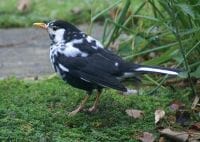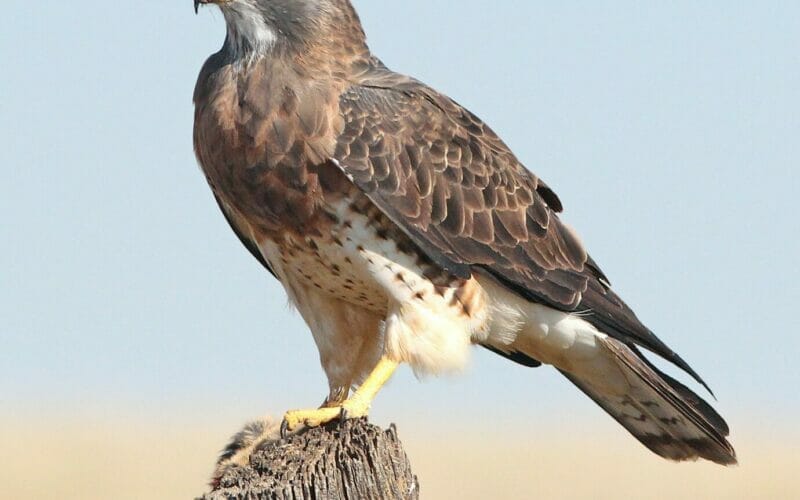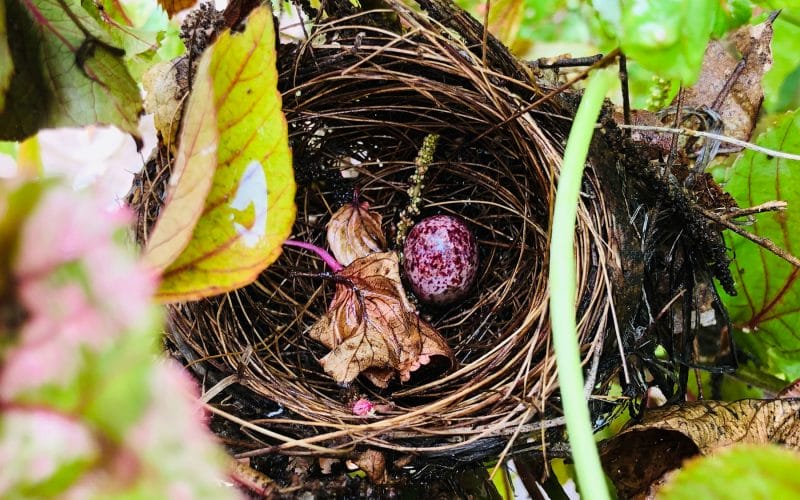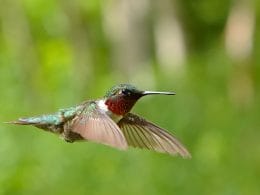Black and white birds are not as common as you might think. A lot of birds have some black and some white on them, usually mixed with other colors. In this post, we review 12 black and white birds in the United States.
Black-billed Magpie (Pica hudsonia)
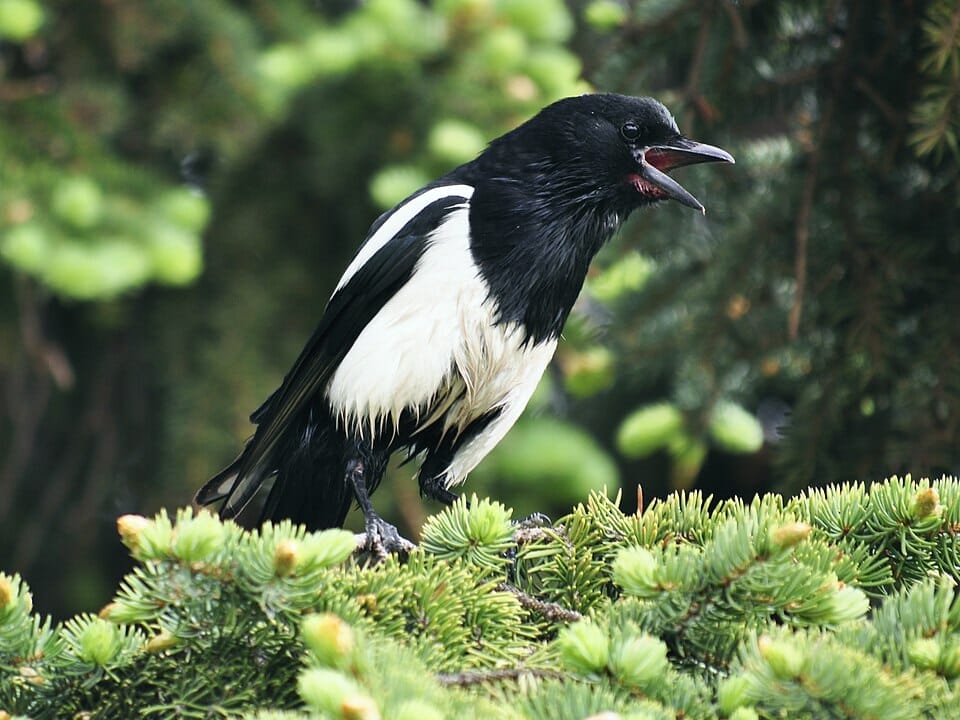
The magpie is probably the most iconic black and white bird. This species has a distinctive black bill to match its pied plumage.
- Length: 17.7-23.6 in (45-60 cm)
- Weight: 5.1-7.4 oz (145-210 g)
- Wingspan: 22.1-24.0 in (56-61 cm)
The range of the Black-billed Magpie is shown below on the eBird map. It can be found throughout the north west parts of the U.S. and into Canada and Alaska.
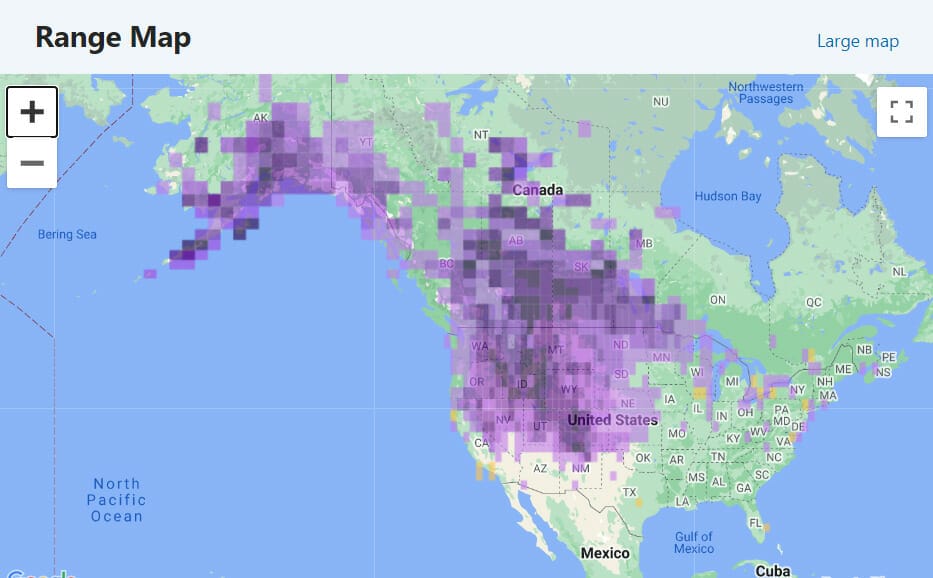
The Black-billed Magpie forages for food on the ground. It is an omnivore and opportunist and so will take anything edible it can find.
Black-capped Chickadee (Poecile atricapillus)
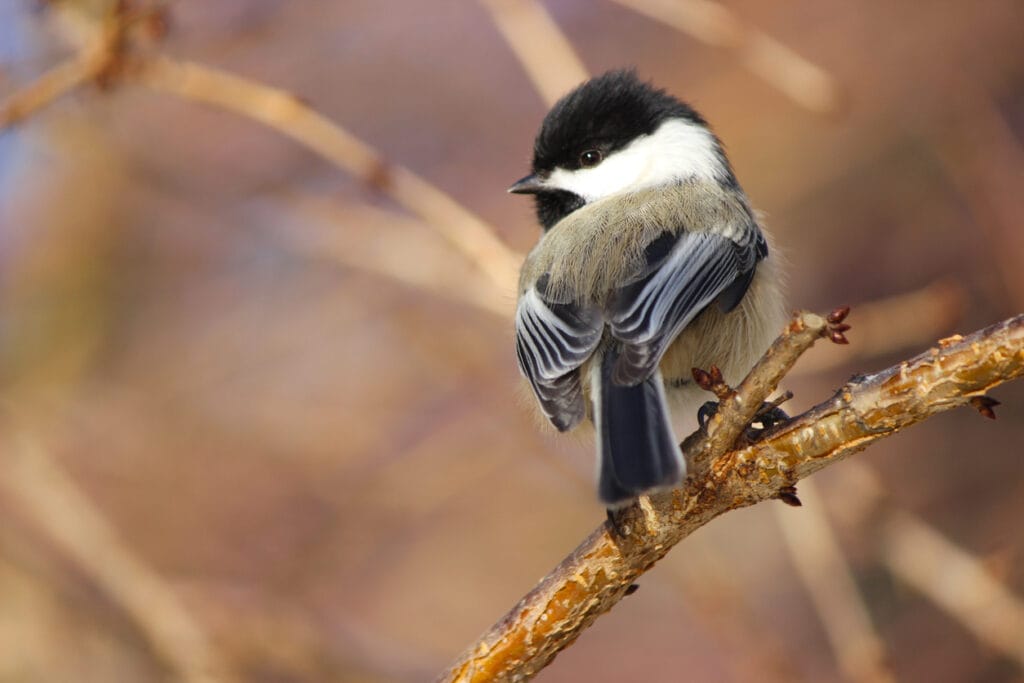
The Black-capped Chickadee looks mostly black and white but has some gray in it as well. It is a small songbird with a distinctive black cap and bib.
- Length: 4.7-5.9 in (12-15 cm)
- Weight: 0.3-0.5 oz (9-14 g)
- Wingspan: 6.3-8.3 in (16-21 cm)
This adorable little bird is common across the U.S. but absent in the far southern states.

The Black-capped Chickadee can be found in a mix of environments with foliage from which it picks off bugs to eat.
Black-and-white Warbler (Mniotilta varia)

This is a most unusual warbler with fabulous black and white stripes and barring surrounding a white belly.
- Length: 4.3-5.1 in (11-13 cm)
- Weight: 0.3-0.5 oz (8-15 g)
- Wingspan: 7.1-8.7 in (18-22 cm)
This is a migratory warbler but may be present throughout the year. It is more reported in the eastern side of the country.
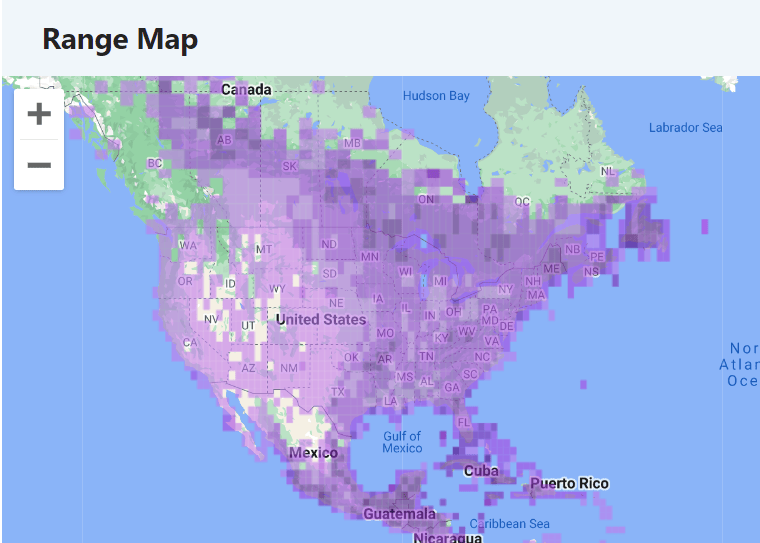
The Black and White Warbler actively searches for bugs along the bark of trees. It can appear to be oblivious to its surroundings when it is feeding.
Downy Woodpecker (Dryobates pubescens)
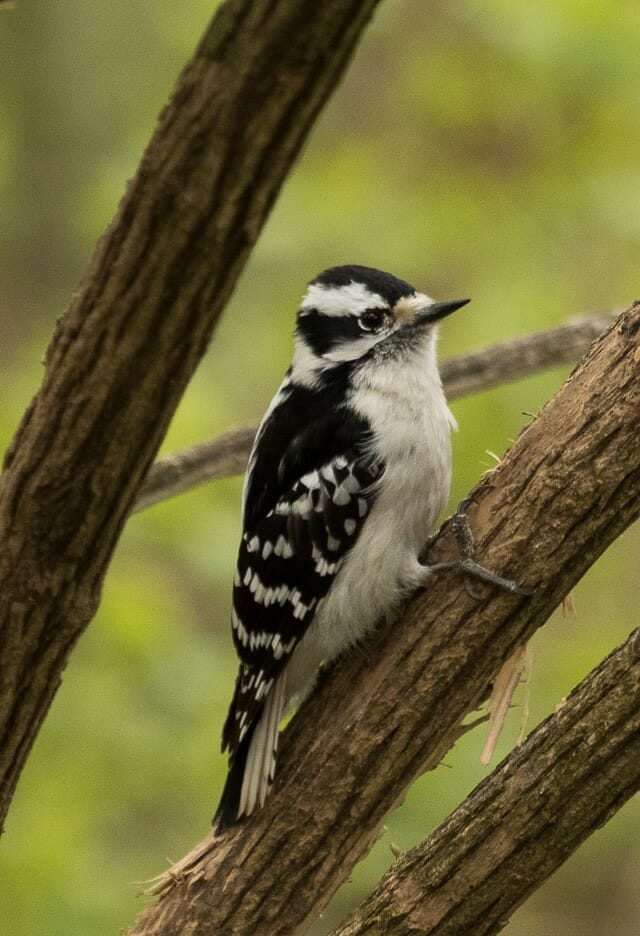
This tiny woodpecker is a picture in black and white. It has a white breast and black back with white marks and spots. A red crest may or may not be visible.
- Length: 5.5-6.7 in (14-17 cm)
- Weight: 0.7-1.0 oz (21-28 g)
- Wingspan: 9.8-11.8 in (25-30 cm)
The Downy Woodpecker is the most common species in the United States. It can be seen in forest, parklands and is a common visitor to backyard feeders.
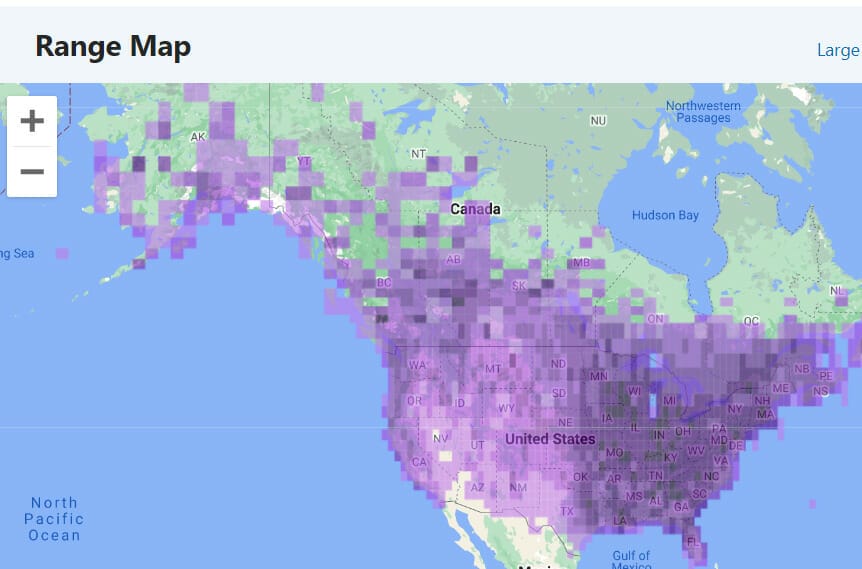
The Downy Woodpecker uses its bill not only for pecking and drumming but also to lift bark and sift through it to find bugs.
Great Northern Diver (Gavia immer)

The Great Northern Diver is a gorgeous and unusual looking waterbird. It has a jet black head and intricate black and white patterning across the body.
- Length: 26.0-35.8 in (66-91 cm)
- Weight: 88.2-215.2 oz (2500-6100 g)
- Wingspan: 40.9-51.6 in (104-131 cm)
This waterbird can be found in waterways and coasts across the U.S. and Canada and Alaska.
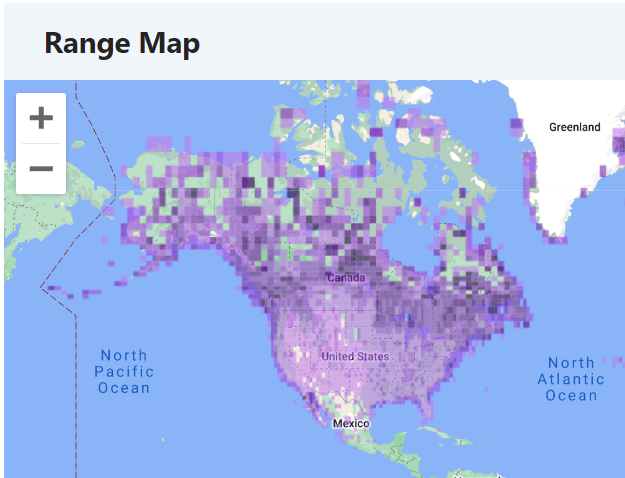
The Great Northern Diver is also known as the Common Loon. It is a diving duck that swims down to find fish.
White-breasted Nuthatch (Sitta carolinensis)
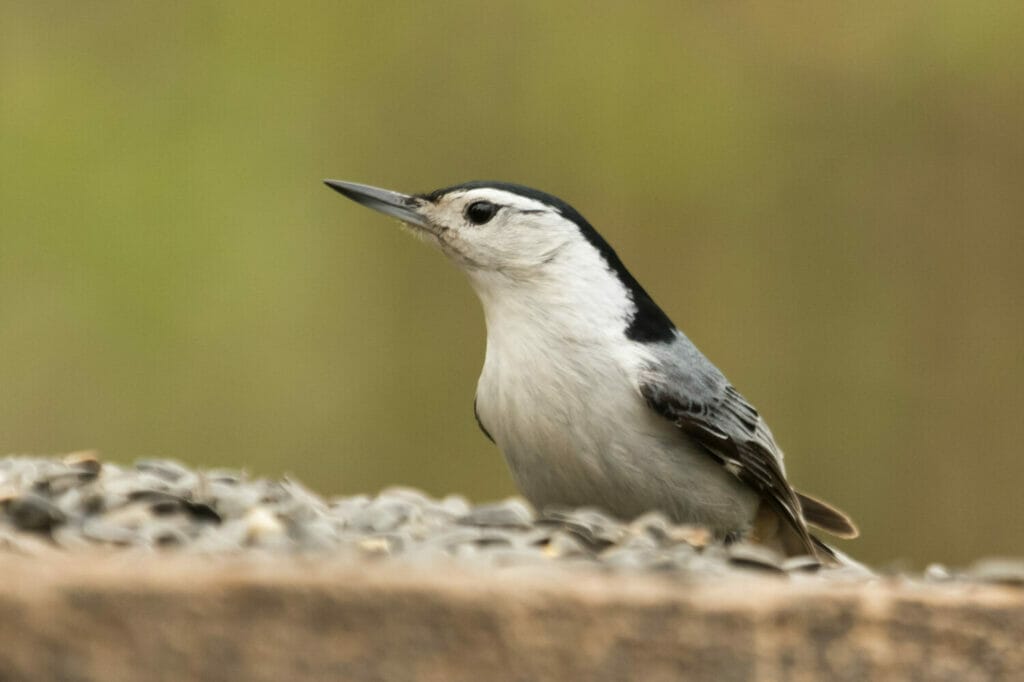
While the White-breasted Nuthatch has some gray on the wings, it is largely black and white. The white face and breast are very distinctive.
- Length: 5.1-5.5 in (13-14 cm)
- Weight: 0.6-1.1 oz (18-30 g)
- Wingspan: 7.9-10.6 in (20-27 cm)
This nuthatch is the most commonly seen of the family in the United States. It can be found throughout the country and down into Mexico.

Often seen in its classic pose, jutting out from the side of a tree, the White-breasted Nuthatch scurries around the base of trees looking for bugs in the bark
Black-necked Stilt (Himantopus mexicanus)
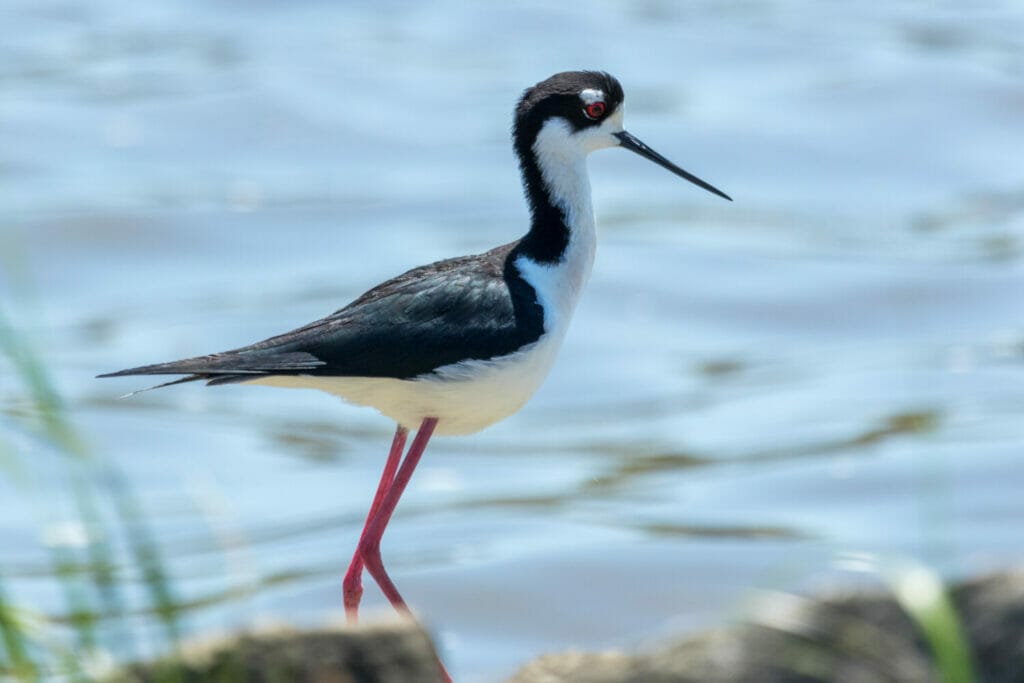
The Black-necked Stilt is a small but elegant wader with bright pink legs sticking out of a black and white body. The red eye is marked with a small but thick white brow.
- Length: 13.8-15.3 in (35-39 cm)
- Weight: 5.3-6.2 oz (150-176 g)
- Wingspan: 28.1-29.7 in (71.5-75.5 cm)
This stilt ranges from southern Canada right through the U.S. and into South America.
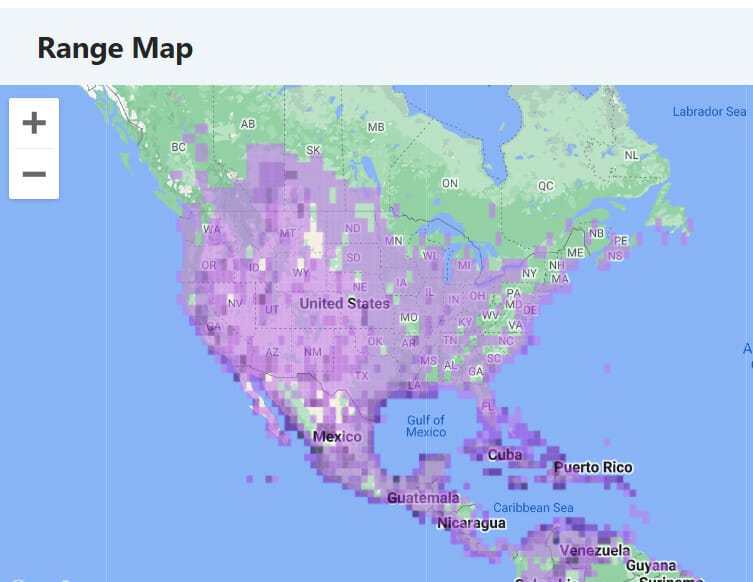
The Black-necked Stilt uses its long legs to extend its feeding range into deeper water. It probes the mud under the water looking for invertebrates.
Black Skimmer (Rynchops niger)
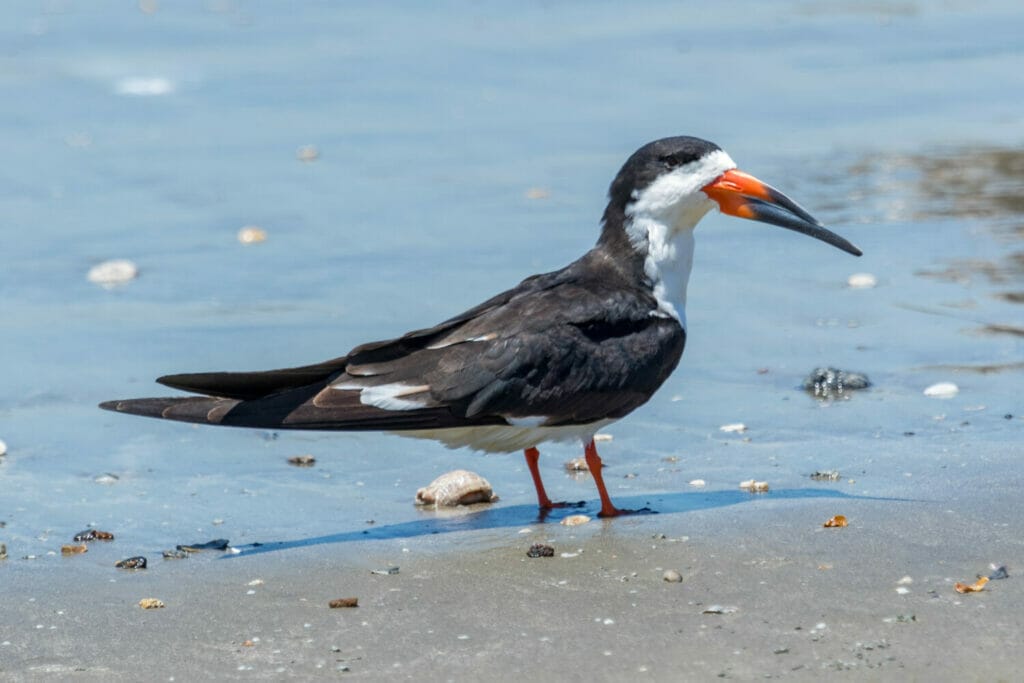
The Black Skimmer is a most unusual tern like bird with a black back and white front. The bill stands out with a shortened upper mandible. The bill is black tipped red.
- Length: 15.8-19.7 in (40-50 cm)
- Weight: 9.3-12.9 oz (265-365 g)
- Wingspan: 42.9-45.3 in (109-115 cm)
The Black Skimmer can be found along southern coasts of the USA.
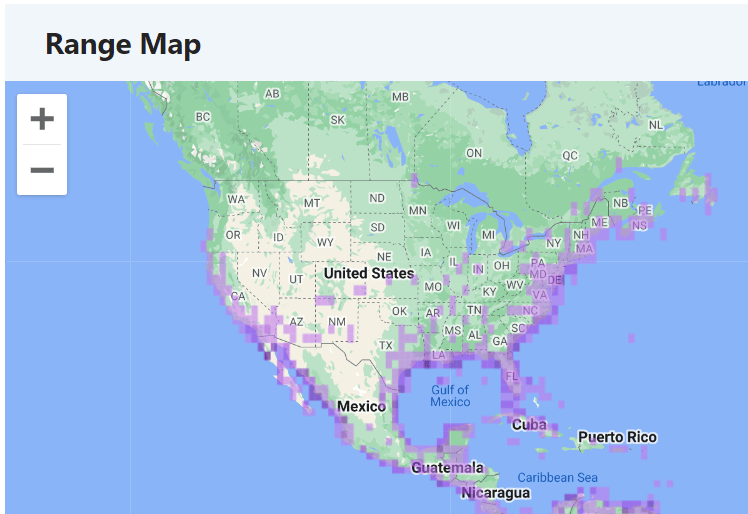
This amazing sea bird uses that unusual bill to scoop up fish that are on the surface of the sea as it flies very close to the water.
Wood Stork (Mycteria americana)
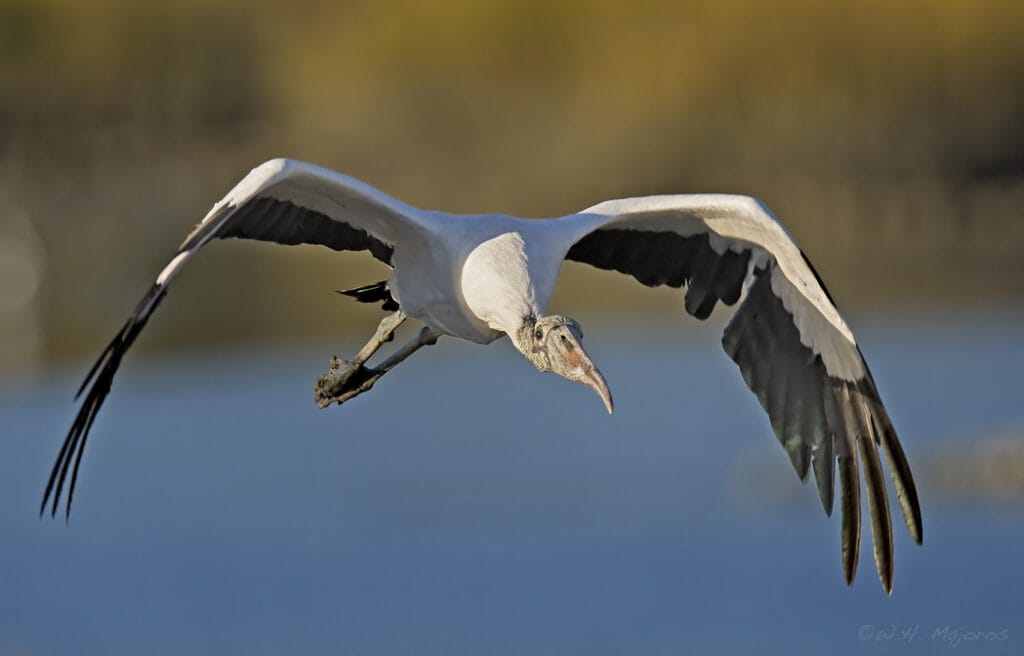
The Wood Stork looks white all over when standing but in flight you can see the wings are about half and half black and white. The head is bald and black.
- Length: 33.5-45.3 in (85-115 cm)
- Weight: 72.3-93.1 oz (2050-2640 g)
- Wingspan: 59.1-68.9 in (150-175 cm)
This large waterbird is found across the south of the States and is particularly concentrated in Florida.

The Wood Stork uses its long legs and strong bill to wade through water dipping its head to catch fish.
American Oystercatcher (Haematopus palliatus)

The American Oystercatcher has pale pink legs and a more vivid eye and bill. The head and neck are black and the body black and white.
- Length:17-20 in (42-52 cm)
This is a coastal bird, found in some parts on the west coast but more on the Gulf of Mexico and Atlantic Coast.
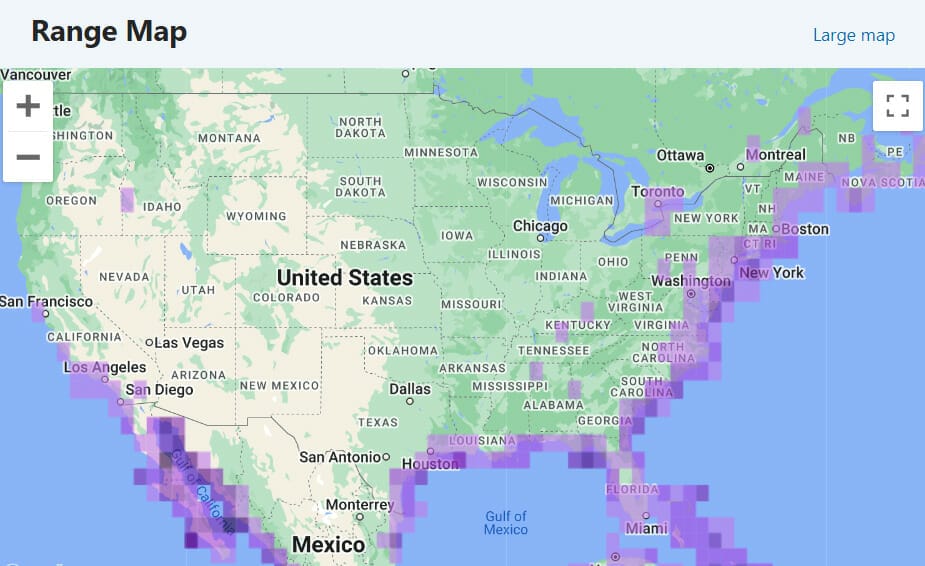
Searching for aquatic invertebrates, the American Oystercatcher probes through the sand with its long bill.
Swallow-tailed Kite (Elanoides forficatus)
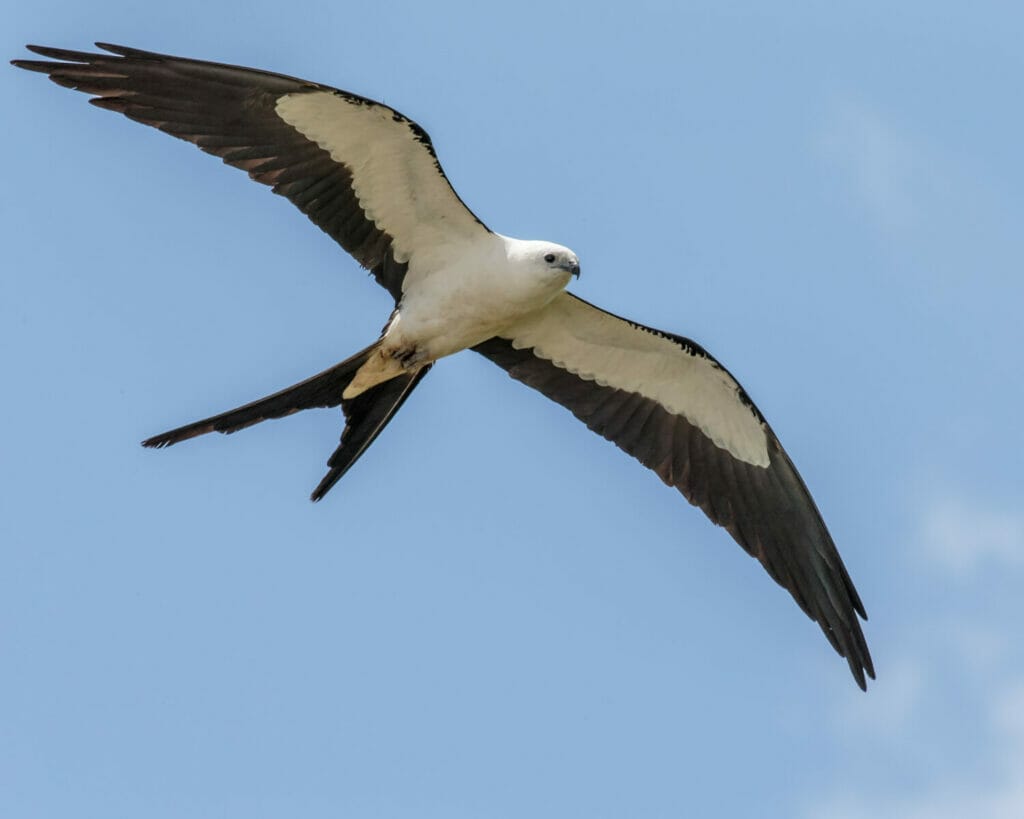
This kite is extraordinary with its huge forked tail and striking black and white plumage. You probably won’t need a guide book to identify it!
- Length: 19.7-25.2 in (50-64 cm)
- Weight: 13.1-21.2 oz (370-600 g)
- Wingspan: 48.0 in (122 cm)
The Swallow-tailed Kite is found across the eastern side of continental America. It is particularly concentrated in Florida.

Despite its obvious size, the Swallow-tailed Kite hunts for insects on the wing.
Snow Bunting (Plectrophenax nivalis)
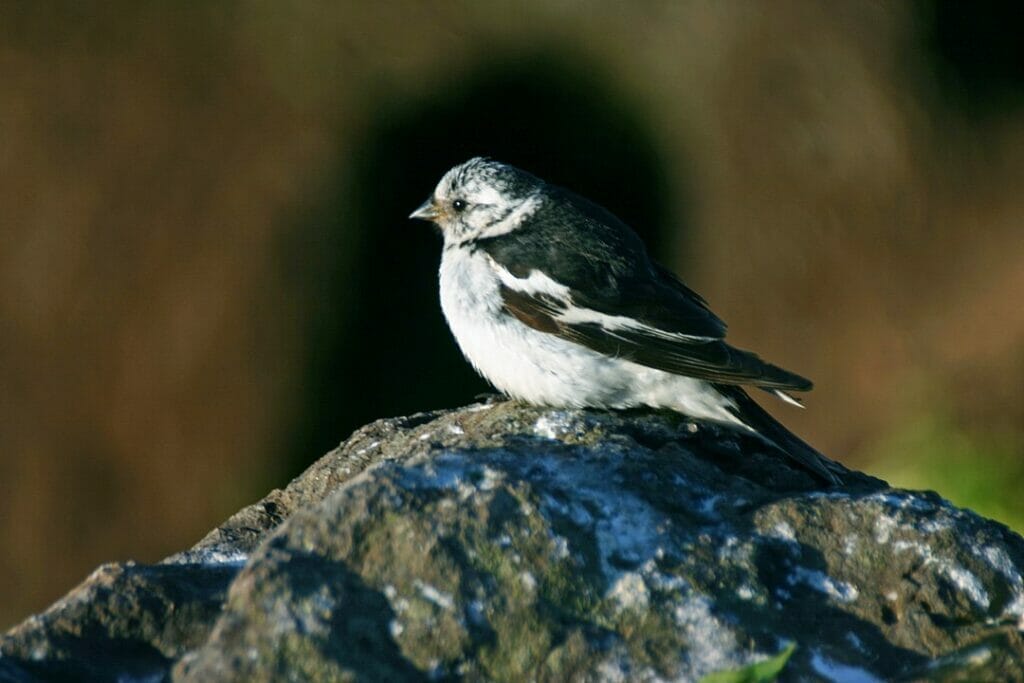
The male Snow Bunting in breeding colors is a spectacular white bird with black wings. At other times in the year, it has brown on the wings.
- Length: 5.9 in (15 cm)
- Weight: 1.1-1.6 oz (31-46 g)
- Wingspan: 11.8 in (30 cm)
Although the Snow Bunting breeds in Arctic areas, it can be found across northern parts of the U.S. at other times.
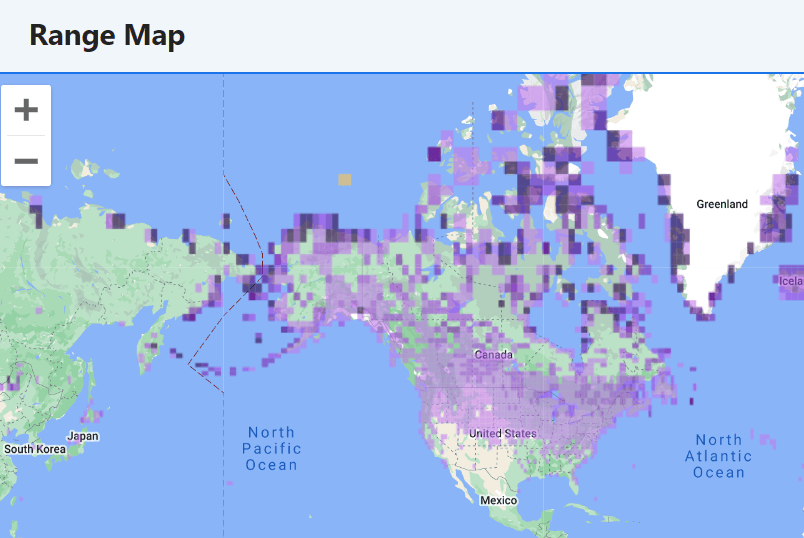
The Snow Bunting is a typical finch, feeding on the ground on seeds.
Conclusion
So, there are our 12 species of black and white birds. I wasn’t sure we would find that many that are pretty much all black and white but turns out there were more than I thought.
The black and white birds that have a splash of color are particularly attractive as if the color enhances the pied plumage. I don’t know why that is, but it is!
I hope you enjoyed reading about black and white birds in the USA.
FAQ
That is likely to be the Dark-eyed Junco. It looks black and white from a distance but it is actually largely brown and gray which is why it didn’t make our list.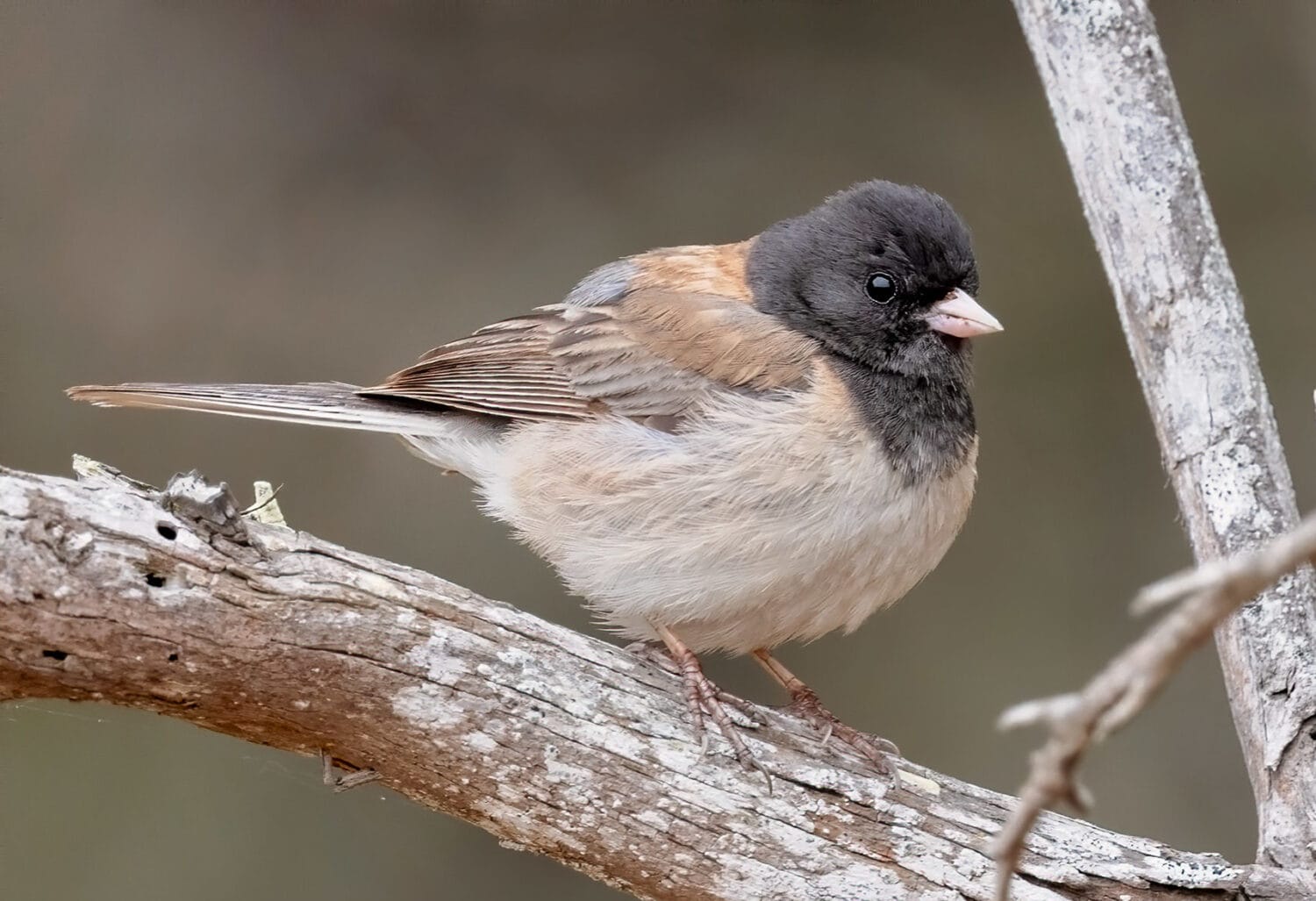
The White-crowned Sparrow is a very attractive little bird but didn’t make our list because the black and white are restricted to the head.
Yes and no. There are no species of blackbird that have white on them but blackbirds are prone to a genetic condition called leucism which cause some of their feathers to be white.